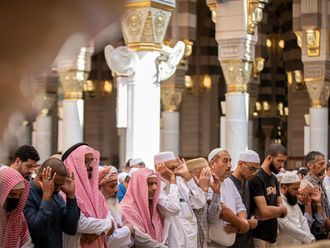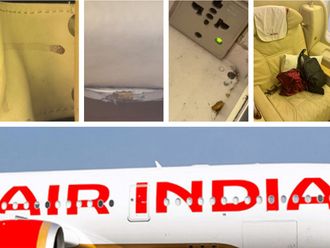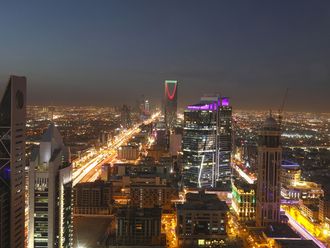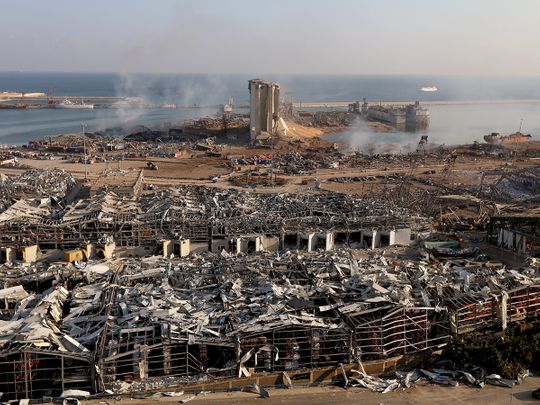
Beirut: The mega-blast that tore through Lebanon's capital with the force of an earthquake, killing more than 100 people and injuring over 4,000, resulted from the ignition of a huge depot of ammonium nitrate at Beirut's port, officials say, but many questions remain.
Here is what we know so far.
What happened?
An initial large explosion in the port area of Beirut took place around 6:00 pm (1500 GMT), resulting in a fire, several small blasts and then a colossal explosion that flattened the harbour front and surrounding buildings.
Seismologists measured the event, which blew out windows at the city's international airport nine kilometres away, as the equivalent of a 4.5 -magnitude earthquake.
Video stills show an intense blazing fireball rising above a line of massive storage silos, then a billowing cloud towering into the sky as a powerful shockwave rips through Lebanon's biggest city.
Why such a big blast?
Lebanon's Prime Minister Hassan Diab said 2,750 tonnes of ammonium nitrate, an agricultural fertiliser, stored in a portside warehouse had blown up, sparking "a disaster in every sense of the word".
Ammonium nitrate is an odourless crystalline substance that has been the cause of numerous industrial explosions over the decades.
When combined with fuel oils, it creates a potent explosive widely used in the construction industry, but also by insurgent groups such as the Taliban for improvised explosive devices.
Lebanon's General Security chief Abbas Ibrahim said the material had been confiscated years earlier and stored in the warehouse, located close to Beirut's shopping and nightlife districts.
Was it deliberate?
There has been no indication from Lebanese officials that the explosions were caused deliberately.
US President Donald Trump said late Tuesday that US generals had told him the explosions appeared to have been caused by a "bomb of some kind."
"It looks like a terrible attack," Trump said. But a Pentagon spokesman, when asked about the president's remarks, told AFP that "we don't have anything for you" and "you will have to reach out to the White House for clarification."
Diab's government described the circumstances at the port that led to the explosion as "unacceptable" and vowed to investigate.
How many casualties?
The blasts killed more than 100 people and injured over 4,000, the Lebanese Red Cross said Wednesday, in the latest updated toll.
Search and rescue teams were still sifting through areas surrounding the port, it added, with rubble from flattened buildings spread across a wide area.
Injuries were recorded right across the city, with glass blown out of buildings in multiple districts.
Scores of people were missing, with relatives pleading on social media for help locating loved ones. An Instagram page called "Locating Victims Beirut'' sprang up with photos of missing people, and radio presenters read the names of missing or wounded people throughout the night.
Many residents moved in with friends or relatives after their apartments were damaged and treated their own injuries because hospitals were overwhelmed
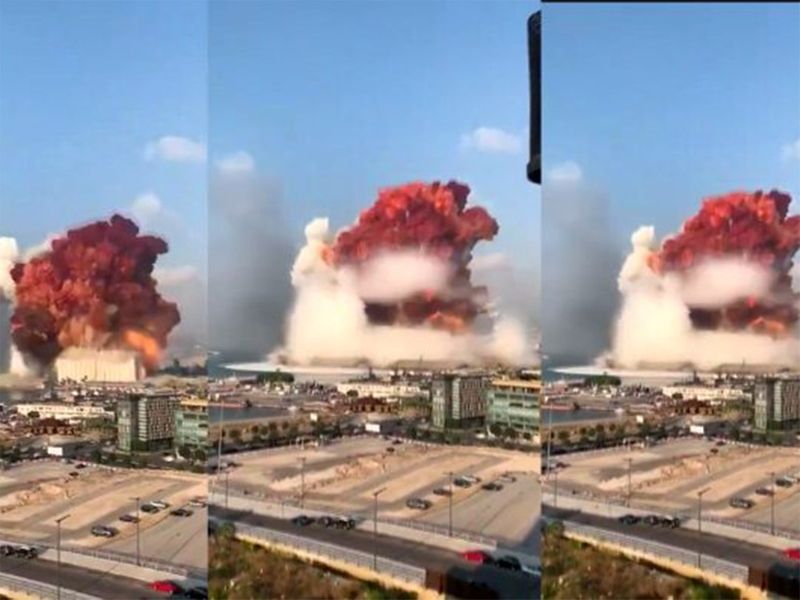
What is concluded from the explosion videos
Many not accustomed to seeing large explosions may conflate mushroom clouds and spherical blast waves as nuclear, said Jeffrey Lewis, an arms-control expert and professor at Middlebury Institute of International Studies at Monterey. "But some of the things we associate with nuclear explosions are just associated with explosions."
Few things can be concluded from the videos, including some filmed before the bigger of the blasts, which Lewis said may have begun when munitions in storage caught fire.
A rising cloud of white smoke featured crackling and bright pops consistent with when small munitions - rockets, for instance - begin cooking off, he said.
Then a fireball erupts, followed by an orb of white that quickly expands from the blast zone. That is the pressure of the shock wave condensing the moisture in the air, he said.
Brian Castner, a former Air Force bomb technician and investigator at Amnesty International, echoed that on Twitter, saying the shock wave "is visible in the humid air."
The telltale signs of ignited ammonium - reddish smoke - spewed from the blast, Lewis said. The color is consistent with the chemical compound and comes from nitrogen oxides, the byproduct of which gives smog its reddish-brown tones.
Around 2,700 tons were stockpiled, Lebanese President Michel Aoun said. That is near back-of-the-envelope estimates of the size of the explosion, which is around the equivalent of a "few hundred tons of TNT," Lewis said. Ammonium nitrate is not as powerful as TNT.
In 2011, a similar explosion occurred in Cyprus after munitions stored there for years exploded, killing at least 12



